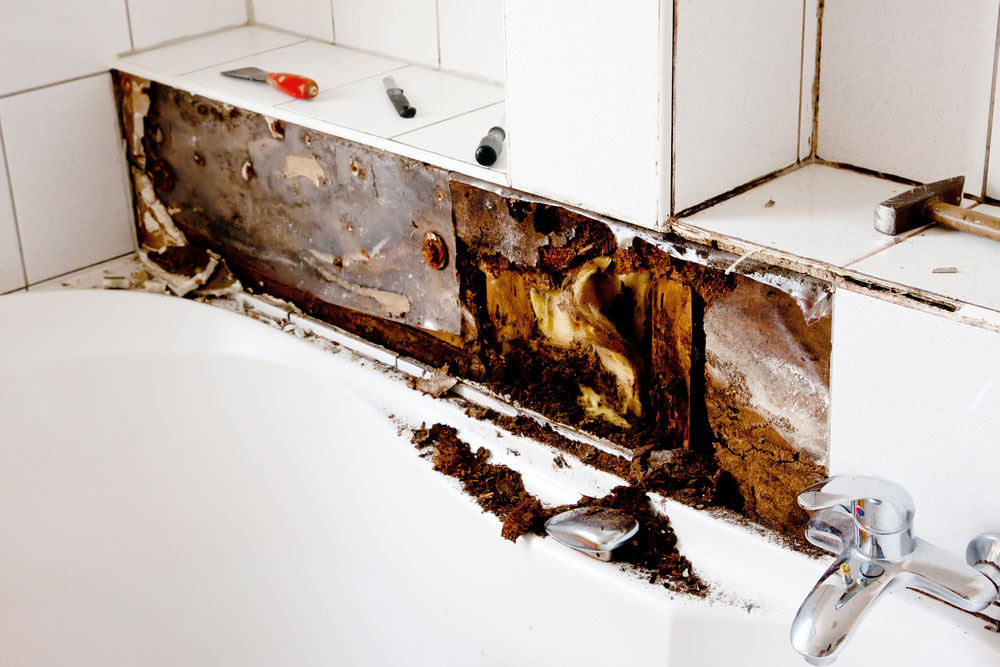Avoiding Water Damage in the Bathroom
Avoiding Water Damage in the Bathroom
Blog Article
They are making a few great annotation on How to Prevent Bathroom Water Damage overall in the article directly below.

The washroom is incredibly at risk for wet accumulation as well as potential water damages due to the regular use of water in it. This short article uses straightforward evaluation strategies to assist identifying water damage threats.
The frequent use water in the bathroom makes it incredibly at risk for moist build-up and also potential water damages. By evaluating it routinely, you can minimize water relevant damages.
The complying with collection of examinations is very easy to carry out as well as need to be done once in every three months in order to keep your washroom healthy and also to prevent potential water damages triggered by the tub, the shower, pipeline joints and also plumbing, sinks, closets, and also the toilet
Do not neglect carrying out these evaluations as well as be detailed while executing them. Remember that these straightforward inspections can save you a lot of cash by giving very early signs for water damages
Sinks and also Cabinets
Sinks and cabinets are exposed to moisture and humidity daily and are frequently overlooked. Inspect regularly under the sink and on the countertop over it. Fix any kind of drip in the catch as it may suggest drain problems. Look around the sink, slow-moving draining pipelines might show an obstructed drain. Replace sink seals if they are cracked or loosened.
Bath tub as well as Shower
The shower as well as bathtub require unique focus as well as maintenance. Check the tiles and also change if broken. Ensure that there is no missing cement between the tiles. Check as well as change split caulking at joints where the walls fulfill the floor or the bathtub. Obstructed drains and also pipes problems will certainly avoid the bath tub from drying and might indicate significant issues under the tub. Consult with a specialist instantly to stop structural damages. Pay attention to stainings or soft areas around the tub walls as they might indicate an interior leakage.
Plumbing
Signs for water damage are tough to discover since a lot of pipelines are set up inside the walls.
Pay unique attention to floor covering and wall surfaces dampness as well as discolorations as they may suggest an unnoticeable plumbing trouble. Check wetness degrees in adjoining spaces as well.
The Bathroom
The commode is a vulnerable water joint. Examine the water lines and look for leakages around the toilet seat, in the pipe, and under the water storage tank. If you find any indications of dampness on the floor around the bathroom, look for leakages in the toilet rim as well as container seals.
Be aware that hanging bathroom dish antiperspirants increases the possibilities for blockages.
Water Damage Signs In The Bathroom To Avoid Cleanup
Musty smell
This is one of the easiest signs to catch because musty smells are so odorous. The damp, earthy, moldy smell should be a big red flag. The smell will develop when moisture gets trapped in surfaces, and begins to facilitate mold growth. Leaking pipes under cabinets, inside walls, and behind shower fixtures will cause moisture to stay trapped and not dry, which will lead to mold growth and spread. As soon as you notice any musty smells in your bathroom, have it checked for hidden water damage and cleanup signs.
Visible mold
If the smell isn’t there to give it away, sometimes you will actually see mold growth. Finding mold in your bathroom is a serious problem, because mold is very harmful to your health. By the time mold growth is visible, it also means that water damage has already occurred and been present for some time. The only way the mold problem can be resolved is to find the source of the moisture and get it stopped. To safely and adequately remove mold, you need to have professionals handle the remediation. Do not waste any time in getting mold problems addressed, fixed, and sanitized so that you can protect you and your family from the many respiratory symptoms caused by mold exposure.
Damaged floors
Bathroom floors should be able to withstand some exposure to water while still remaining in good condition. However, when excess exposure or water leaks occur, they will begin to damage even the most water-resistant flooring. If you notice any cracking, bubbling, staining, or warping on your bathroom floors, there is probably a water leak somewhere causing the distortion. If you notice areas of the floor have become softer, or even have a spongy feeling, there is probably damage to the subfloor. Subflooring is typically made up of plywood. When plywood is exposed to water or moisture, it will absorb it. Once it has become saturated, the weight of the excess water will cause the wood to swell and soften. Check the floors in your bathroom frequently to catch any of these sings before they lead to damaged subflooring.
Changes on walls
When water leaks behind walls, it will cause changes in the drywall. Peeling plaster, blistering paint, and soggy wallpaper are all good indicators that excess water is building up behind the wall. Water leaking behind drywall will cause it to swell and be soft to the tough. If you start to notice gaps along the trim of your walls, or where tile meets the wall, it could also be a strong indicator that there is a leak behind the wall. Any changes, distortion, or damage on the walls should be evaluated as soon as you notice it to prevent further water damage and cleanup.

As a keen reader about How to Fix a Water Damage Bathroom, I assumed sharing that piece of content was really useful. Sharing is nice. Who knows, you could be doing someone a favor. We appreciate reading our article about How to Fix a Water Damage Bathroom.
About Report this page